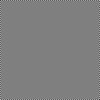Anthony:
One theorem and two corollaries found in the "Interpolation Conflicts with Strong Diagonal Preservation" subsection of my student Chantal Racette's Masters thesis are relevant to this issue. See section 3.5.3 of
http://arxiv.org/abs/1204.4734. (I'm the author of the theorem and corollaries, but they went into her thesis because they justify her efforts.)
As the section title says, if a scheme (linear or nonlinear) is interpolatory (which implies that it perfectly preserves hash patterns, actually any image, under no-op, although being interpolatory is a stronger condition because it does not only apply to no-op), then it cannot come close to doing a decent job with diagonal features.
And vice versa: If a scheme does a perfect job at preserving diagonal features, it can't be interpolatory.
This does not mean that one can't get something which is pretty good at preserving diagonal features and pretty close to being interpolatory. But if one is achieved perfectly, the other can't. And in general, the more of the one, the less of the other.
For example:
Tensor Lanczos 3 (interpolatory) -> sharp diagonal lines have a lot of staircasing when enlarged. (The staircasing takes the form of small hash pattern echos.)
EWA LanczosSharp 3 (not interpolatory) -> not so much, but results are generally blurrier.
In summary: The zero sum game between blurriness and jagginess is really hard to escape.
Mitchell-Netravali and EWA LanczosSharp are well-liked because they are good compromises between the two.
 ->
-> 
 ->
-> 